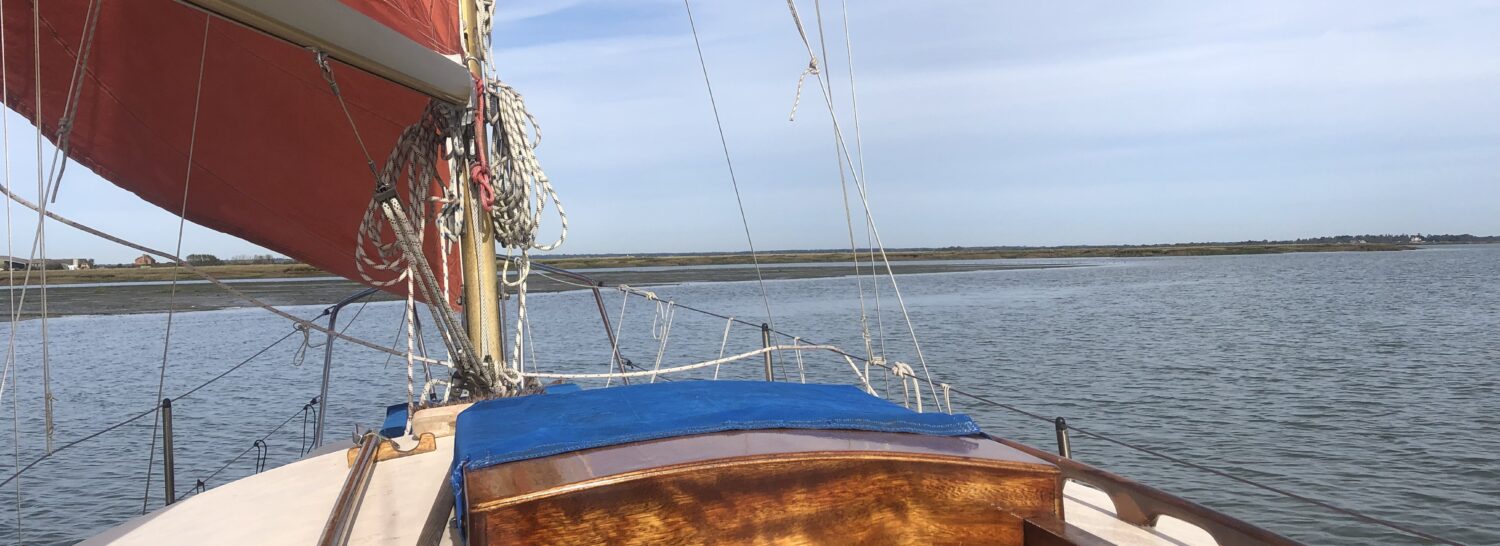Little Ship, Big Story is subtitled, ‘the adventures of HMY Sheemaun and the amazing stories of those who have sailed on her.’ I came by my copy direct from the author, as a gift, for the enjoyment he and his wife have had through reading my own titles, here is the story…
I was attending the Queenborough Classic Boat Festival this September just gone (over the period of mourning for Queen Elizabeth II) and was berthed on the Queenborough YC pontoon. The engineless spritsail barge Cambria approached during the afternoon of the Friday before the event – which I filmed.
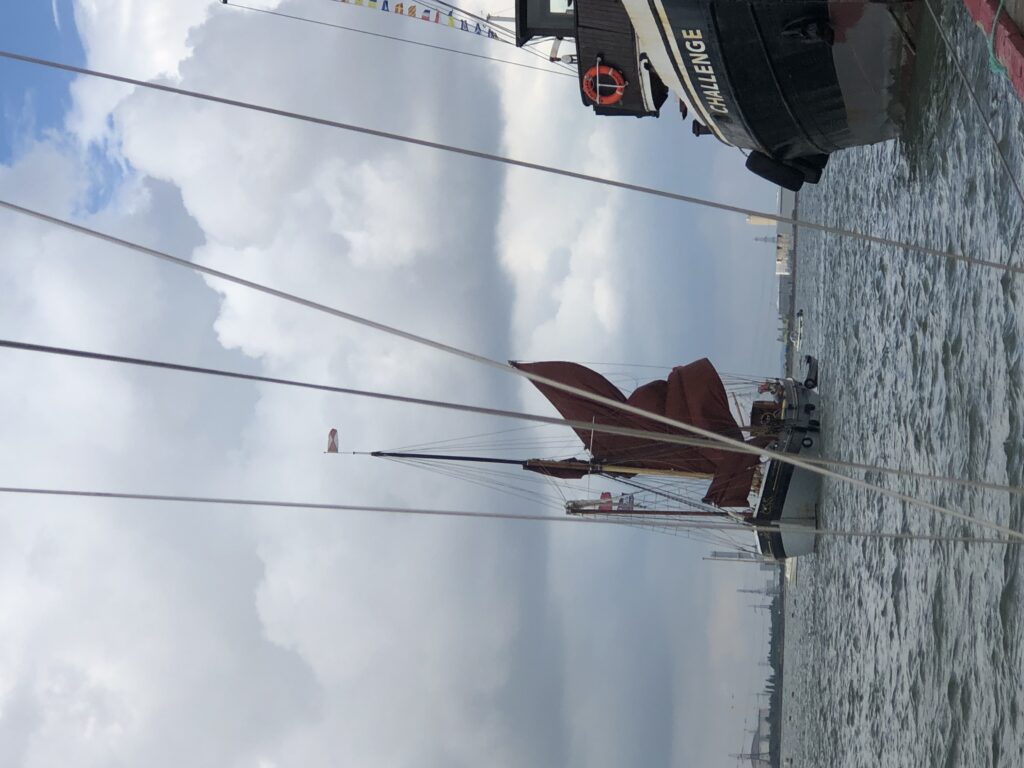
It was brilliantly achieved by skipper, Ian Ruffles.
Within moments of her coming alongside a lady padded along the pontoon to Whimbrel, clutching a book. The lady, Maura Pell, came aboard asking if I could sign a copy of one of my books. Then, as I had a few copies of my last work aboard (Rochester to Richmond) she purchased a copy of that too.
The following day, Saturday, Moara returned with a present from her husband, Rodney, owner of the motor yacht Sheermaun which is based at Ramsgate. Inside the cover Rodney wrote a short but touching dedication – ‘To Nick Ardley who writes so vividly. Best wishes, Rodney Pell, Sept 2022′
Thank you Rodney, and Maura too…
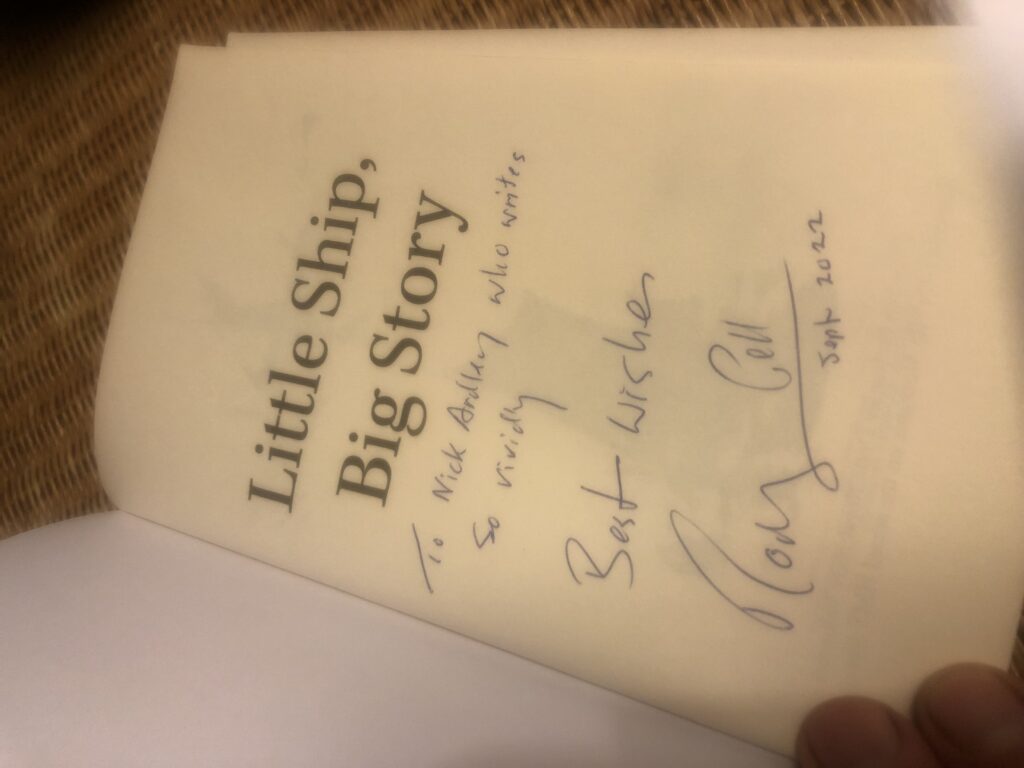
Continuing from the Friday. After Maura was ‘dragged away’ left – she had a taxi to catch for she’d been doing ‘cook’ duty on the Cambria – by Ian Ruffles, Ian told me that he’d had palpitations as he cleared the steam tug and thought Whimbrel was on the main pontoon. He soon realised we were tucked in at the outer end on the Queenborough YC section. Chuckling, he said, ‘I had visions of crushing you to matchsticks…’
It was then I told him I’d filmed Cambria’s whole approach and berthing. The Cambria’s mate later said I must have had strong nerves. Heck, I knew we were safe!
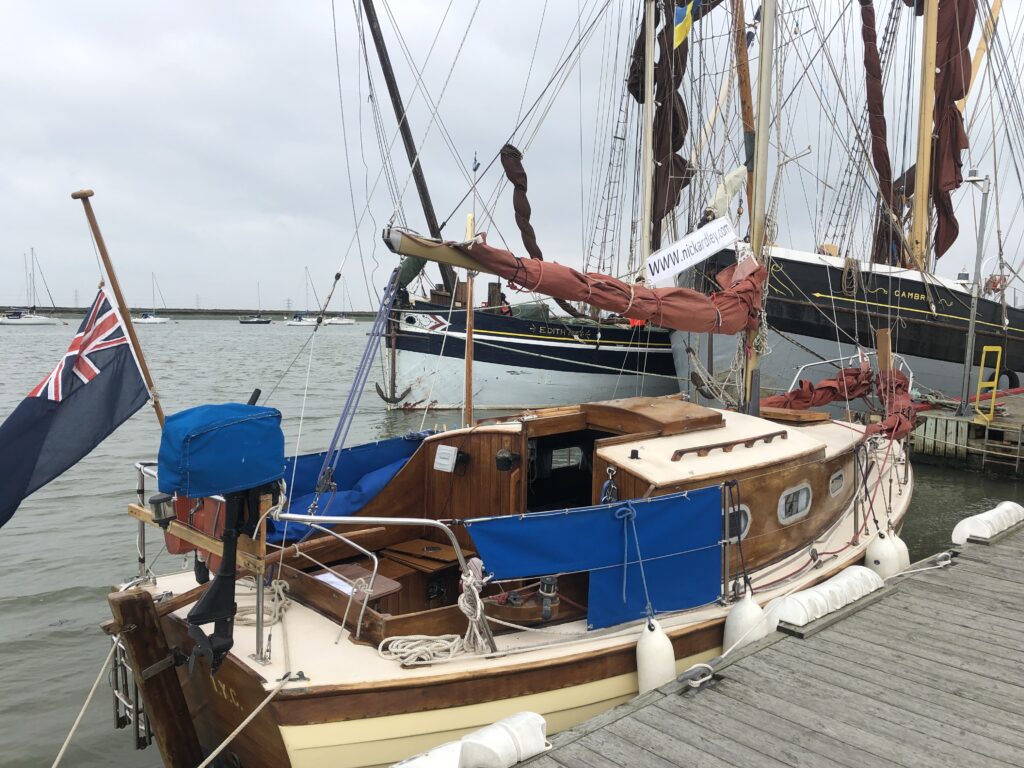
So to the book:

The book is published by the Conrad Press, 2019. ISBN: 978-1-911546-46-7
See: www.conradpress.com
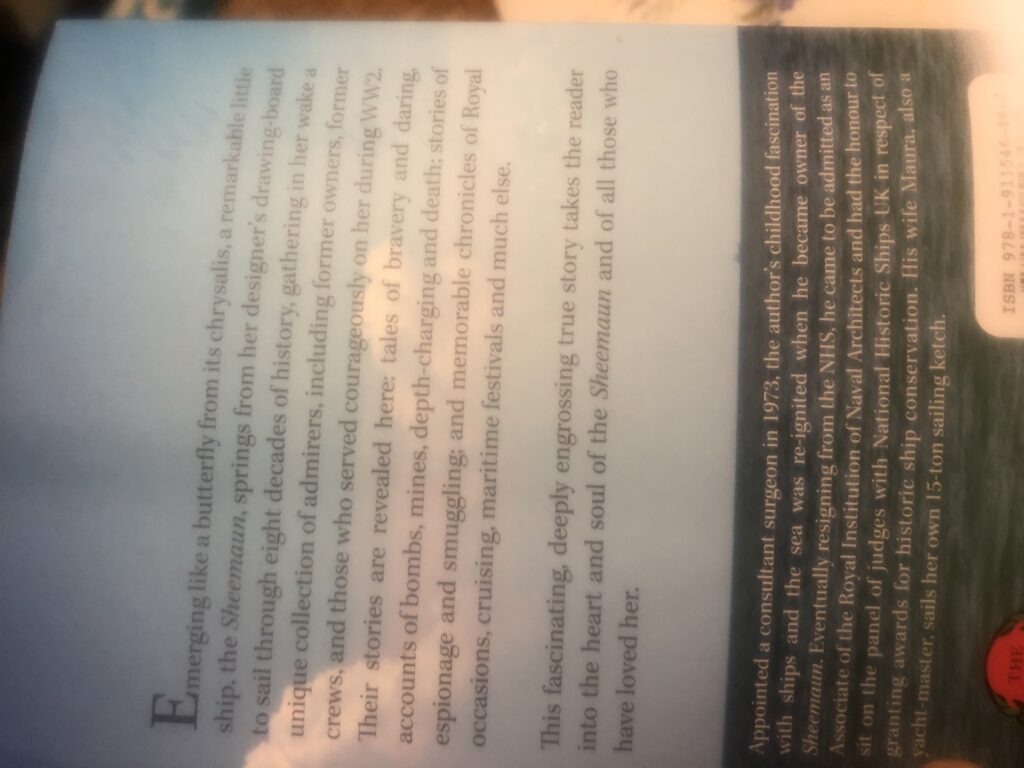
Rodney tells an engaging story of this little ship (Not one that went to Calais) from her birth to his acquisition. One is engaged from the beginning until with a potted run down of what he has done with her with various crews made up of friends and family.
The vessel seemed to have a run of owners after her build in 1935 with the Ministry of Defence (Navy) ultimately owning her for the longest period during the greater part of world war two, until 1950 when a period of stability of ownership came about.
The depth of detail Rodney has unearthed is fascinating and so very interesting. Pictures from the daughter of the first owner, right through.
The tales of the little ship’s life during those long wartime years between 1939 to 1945 and onto the Transport Department when sold out of service in 1949 held me riveted, devouring page after page, not wanting to put it down. Fortunately, convenient breaks helped: we were away sailing while I read much of the book!
The Sheermaun’s war years were largely spent in the Thames. She was based at a facility by Cliffe Fort on the Kent shore in Lower Hope Reach. From there she patrolled the Lower Thames watching for parachute mines and checking on the movement of vessels – many of which were spritsail barges. Nothing moved unless allowed. Nothing moved through the defence booms running from Shoeburyness to Minster on the Isle of Sheppey unless permission was given. Nothing moved unless the correct signal flags were flown…
Her waters were the waters sailed by all of those that sail the Thames estuary now and a remarkable lost history has been unearthed with this little ship’s story. It has helped me understand little bits of this and that which has teased my mind me for many years.
The Sheermaun was on station when the American liberty ship Richard Montgomery grounded and split, sinking on the edge of the Grain bank. She has a reputed remnant of around 4,500 tons of ammunition aboard still…
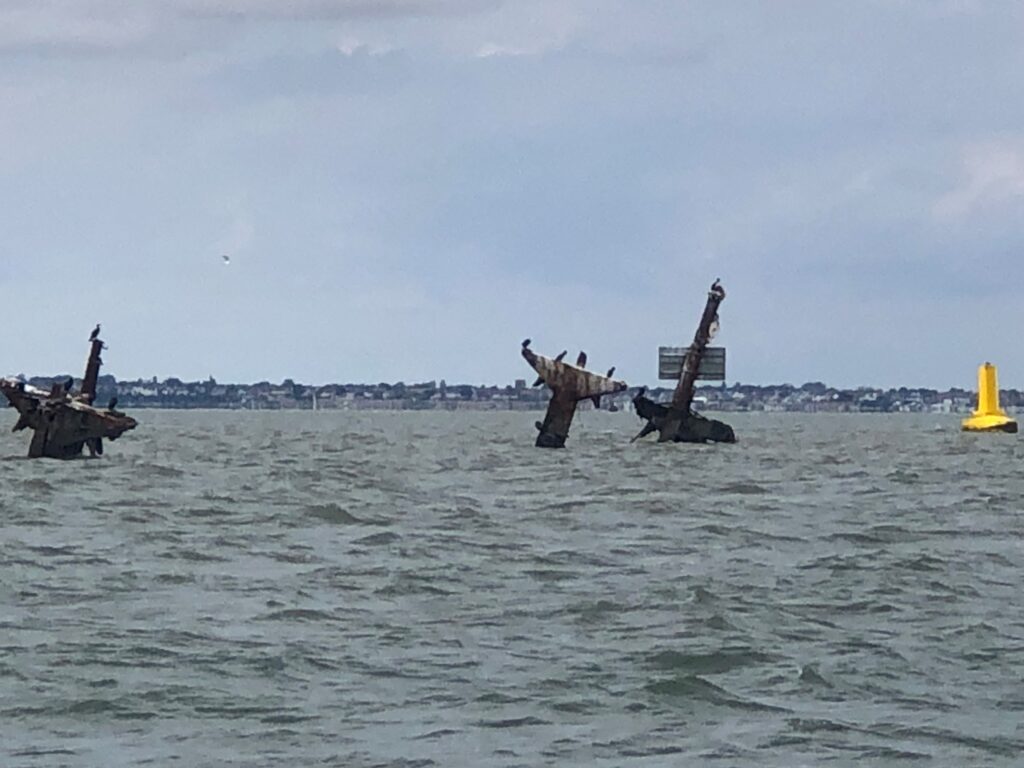
One of the details I found almost personal was the dishing out and collection of flags for vessel clearance purposes that took place. One of the inportant functions of a host of such craft.
Apparently barge skipper’s would rant at the instruction to ‘heave to’ – in a barge! When my parents purchased the spritsail barge May Flower they found a flag of unknown origin with her papers.
I have asked ‘the barge world’ about this but nothing came from it. However, I have since come across a world war two naval code of flags, of which I took a screen shot of a small section.

Below is the flag found by my parents – it is clearly a No.7!

So, were spritsail barges on regular runs between the east coast ports and the London River given coded flags?
I asked Rodney about this in an email. It would appear that there is no one left around who knows for certain. Rodney investigated the whereabouts of the records of the little ships of WW2 and as said in his book, it transpired that sometime in the 1950s the whole lot was destroyed – a wonton act of maritime vandalism, for sure!
The Sheermaun survived the war when so many little ships pressed into a service not built for did not. She has survived into this millennium and seems likely to make her centenary, not so many years away now.
In the tableaux of the vessel’s life there are so many little connections between people, events, and places that seem impossible, yet are true: Rodney painstakingly tracked them down. At times the connections are sad and thought provoking, others funny and light hearted…
Yes, a book for sailors. A book for those interested in history. A book for those who just like a damned good yarn…
Thank you again, Rodney…
One ask. It would be great if the Sheermaun could grace Queenborough , once a regular port of call 75 years ago, for a Classic Festival in the near future. Then I could visit!
